Related Research Articles
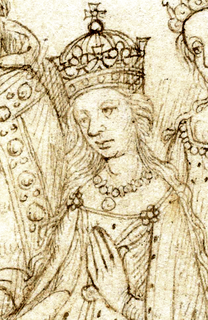
Catherine of Valois was the queen consort of England from 1420 until 1422. A daughter of Charles VI of France, she married Henry V of England, and gave birth to his heir Henry VI of England. Catherine's marriage was part of a plan to eventually place Henry V on the throne of France, and perhaps end what is now known as the Hundred Years' War, but although her son Henry VI was later crowned in Paris this ultimately failed.

Elizabeth of York was Queen of England from her marriage to King Henry VII on 18 January 1486 until her death. Elizabeth married Henry after his victory at the Battle of Bosworth Field, which marked the end of the Wars of the Roses. Together, they had seven children.

Mary Tudor was an English princess who was briefly queen of France. She was the younger surviving daughter of King Henry VII of England and Elizabeth of York, and the third wife of Louis XII of France, who was more than 30 years older than her. Following his death, she married Charles Brandon, 1st Duke of Suffolk. Performed secretly in France, the marriage occurred without the consent of Mary's brother, Henry VIII. The marriage necessitated the intervention of Thomas Wolsey; Henry eventually pardoned the couple, after they paid a large fine.
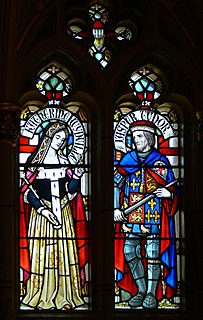
Jasper Tudor, Duke of Bedford and Earl of Pembroke, also called Jasper of Hatfield, was the uncle of King Henry VII of England and a leading architect of his nephew's successful accession to the throne in 1485. He was from the noble Tudor family of Penmynydd in North Wales.
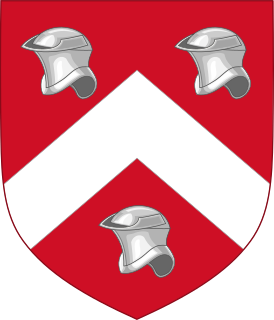
Sir Owen Tudor was a Welsh courtier and the second husband of Catherine of Valois (1401–1437), widow of King Henry V of England. He was the grandfather of Henry VII, founder of the Tudor dynasty. Owen was a descendant of a prominent family from Penmynydd on the Isle of Anglesey, which traces its lineage back to Ednyfed Fychan, a Welsh official and seneschal to the Kingdom of Gwynedd. Tudor's grandfather, Tudur ap Goronwy, married Margaret, daughter of Thomas ap Llywelyn ab Owain of Cardiganshire, the last male of the princely house of Deheubarth. Margaret's elder sister married Gruffudd Fychan of Glyndyfrdwy, whose son was Owain Glyndŵr. Owen's father, Maredudd ap Tudur, and his uncles were prominent in Owain Glyndŵr's revolt against English rule, the Glyndŵr Rising.

Margaret Douglas, Countess of Lennox, was the daughter of the Scottish queen dowager Margaret Tudor and her second husband Archibald Douglas, 6th Earl of Angus. In her youth she was high in the favour of her uncle, Henry VIII of England, but twice incurred the King's anger, first for her unauthorised engagement to Lord Thomas Howard, who died in the Tower of London in 1537 because of his misalliance with her, and again in 1540 for an affair with Thomas Howard's nephew Sir Charles Howard, the brother of Henry's wife Catherine Howard. On 6 July 1544, she married Matthew Stewart, 4th Earl of Lennox, one of Scotland's leading noblemen. Her son Henry Stuart, Lord Darnley, married Mary, Queen of Scots, and was the father of James VI and I.

Stephen Gardiner was an English bishop and politician during the English Reformation period who served as Lord Chancellor during the reign of Queen Mary I and King Philip.
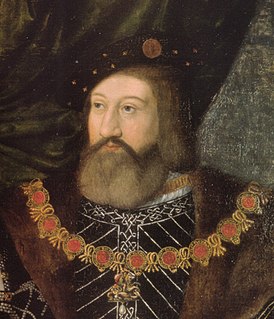
Charles Brandon, 1st Duke of Suffolk, 1st Viscount Lisle, PC was an English military leader and courtier. Through his third wife, Mary Tudor, he was brother-in-law to King Henry VIII.
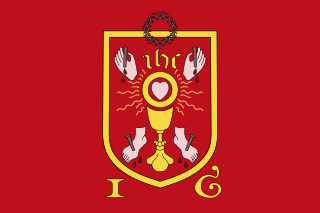
The Pilgrimage of Grace was a popular uprising that began in Yorkshire in October 1536, before spreading to other parts of Northern England including Cumberland, Northumberland, and north Lancashire, under the leadership of lawyer Robert Aske. The "most serious of all Tudor rebellions", it was a protest against Henry VIII's break with the Roman Catholic Church, the dissolution of the lesser monasteries, and the policies of the King's chief minister, Thomas Cromwell, as well as other specific political, social, and economic grievances.

Henry, Duke of Cornwall was the first living child of King Henry VIII of England and his first wife, Catherine of Aragon, and though his birth was celebrated as that of the heir apparent, he died within weeks. His death and Henry VIII's failure to produce another surviving male heir with Catherine led to succession and marriage crises that affected the relationship between the English church and Roman Catholicism, giving rise to the English Reformation.

In common parlance, the wives of Henry VIII were the six queens consort wedded to Henry between 1509 and his death in 1547. In legal terms, King Henry VIII of England had only three wives, because three of his marriages were annulled by the Church of England. However, he was never granted an annulment by the Pope, as he desired, for Catherine of Aragon, his first wife. Annulments declare that a true marriage never took place, unlike a divorce, in which a married couple end their union. Along with his six wives, Henry took several mistresses.
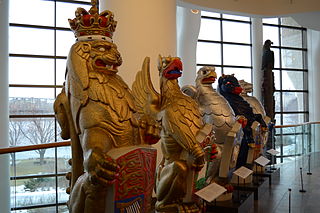
The Queen's Beasts are ten heraldic statues representing the genealogy of Queen Elizabeth II, depicted as the Royal supporters of England. They stood in front of the temporary western annexe to Westminster Abbey for the Queen's coronation in 1953. Each of The Queen's Beasts consists of an heraldic beast supporting a shield bearing a badge or arms of a family associated with the ancestry of Queen Elizabeth II. They were commissioned by the British Ministry of Works from the sculptor James Woodford, who was paid the sum of £2,750 for the work. They were uncoloured except for their shields at the coronation. They are now on display in the Canadian Museum of History in Quebec.
David A. Carpenter is an English historian and writer, and Professor of Medieval History at King's College London where he has been working since 1988.
Dr Thomas Savage was a prelate and diplomat during the Tudor period.

Gregory Cromwell, 1st Baron Cromwell, KB was an English peer. He was the only son of the Tudor statesman Thomas Cromwell, 1st Earl of Essex and Elizabeth Wyckes.

Thomas Dacre, 2nd Baron Dacre of Gilsland, KG was the son of Humphrey Dacre, 1st Baron Dacre of Gilsland and Mabel Parr, great-aunt of queen consort Catherine Parr, the sixth and final wife of King Henry VIII of England. His mother was the daughter of Sir Thomas Parr of Kendal by his wife, Alice Tunstall.
Events from the 1500s in England.
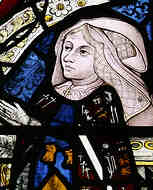
Elizabeth Tilney, Countess of Surrey was an English heiress and lady-in-waiting to two queens. She became the first wife of Thomas Howard, Earl of Surrey.
William Kingsmill alias William Basyng (?–1549) was Prior of St. Swithun's Priory, Winchester until the Dissolution of the Monastery in 1539; it was a Benedictine monastic house and its shrine to the saint popularly associated with determining the entire period of pre-harvest weather was a place of pilgrimage. He was appointed as the first Dean of Winchester Cathedral at the foundation of the new chapter in 1541.

John Grey, 2nd Viscount Lisle was a British peer of the Tudor period. Upon his death the title Viscount Lisle became extinct, but the Barony of Lisle passed to his unborn daughter Elizabeth, his only child.
References
- ↑ Douglas Richardson, Plantagenet Ancestry: A Study In Colonial And Medieval Families, Genealogical Publishing, 2011, p.370.
- 1 2 James G. Clark, The Religious Orders in Pre-Reformation England, Boydell & Brewer, Rochester, NY, 2002 p.71.
- 1 2 3 D.R. Woolf, "The power of the past: history, ritual and political authority in Tudor England", in Paul A. Fideler, Political Thought and the Tudor Commonwealth:Deep Structure, Discourse, and Disguise, New York, 1992, pp. 21-22.